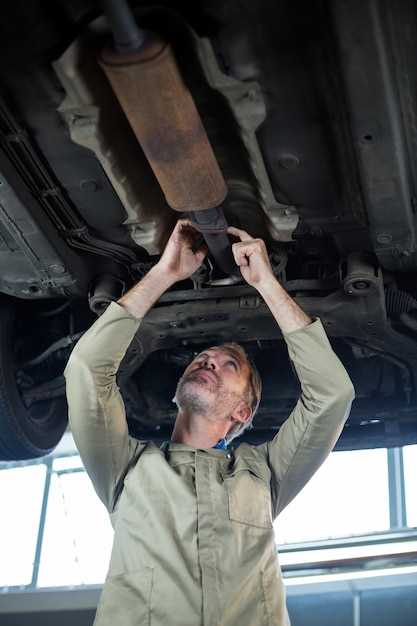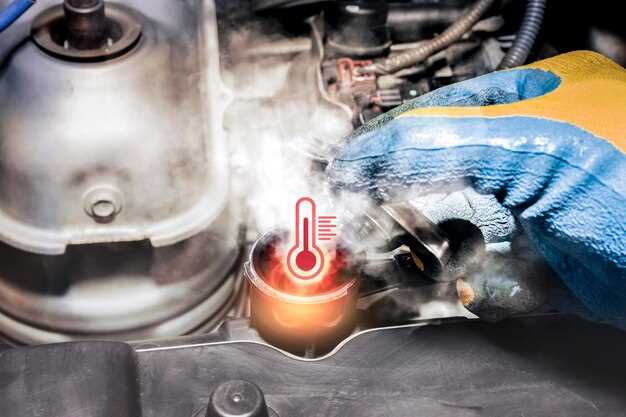

Transmission overheating is a critical issue that can lead to severe damage and costly repairs for vehicle owners. Understanding the causes and implementing preventative measures is vital in ensuring the longevity and efficiency of your vehicle’s transmission system. Overheating often occurs due to a lack of proper fluid levels, excessive towing, or prolonged idling. By being proactive, drivers can protect their vehicles from these detrimental effects.
Regular maintenance is essential in preventing transmission overheating. Routine checks of transmission fluid levels, condition, and quality can help identify potential issues before they escalate. In addition, it is crucial to follow the manufacturer’s recommendations for fluid changes and maintenance intervals to ensure optimal performance.
Another common factor contributing to overheating is excessive load. If you frequently tow heavy loads or carry substantial weight, it puts additional strain on the transmission. Therefore, being mindful of your vehicle’s towing capacity and avoiding overloading can significantly reduce the risk of overheating and extend the life of your transmission.
Finally, monitoring driving habits plays a key role in managing transmission temperature. Activities such as aggressive acceleration and frequent stop-and-go driving can raise the temperature of your transmission fluid. By adopting smoother driving techniques and allowing your vehicle to cool down during extended idling, you can effectively minimize the risk of overheating.
Regular Fluid Checks and Changes

One of the most effective ways to prevent transmission overheating in vehicles is through regular fluid checks and changes. Transmission fluid plays a crucial role in lubricating the components of the transmission system, allowing for smooth shifting and efficient operation. Over time, this fluid can become contaminated or degrade, leading to increased friction and heat buildup.
To ensure optimal performance, it is essential to inspect the transmission fluid level and condition consistently. Checking the fluid should be part of your regular maintenance routine. Look for signs of discoloration, a burnt smell, or the presence of particulates. If the fluid appears low or dirty, it is recommended to change it immediately.
Scheduled fluid changes according to the manufacturer’s guidelines are vital. Most manufacturers suggest changing transmission fluid every 30,000 to 60,000 miles, but this can vary based on driving conditions and habits. Vehicles that frequently operate in stop-and-go traffic, towing, or extreme temperatures may require more frequent changes.
Using the correct type of fluid is equally important. Referencing your owner’s manual ensures that you use the specified fluid for your vehicle’s make and model, as the wrong type can lead to inadequate lubrication and potential overheating issues.
Incorporating these fluid checks and changes into your regular maintenance schedule not only extends the lifespan of your transmission but also enhances overall vehicle performance. By being proactive, you can prevent costly repairs associated with transmission overheating, ensuring a smoother driving experience.
Monitoring Engine Temperature and Alerts

Effective monitoring of engine temperature is crucial in preventing overheating and maintaining optimal vehicle performance. Regularly checking the engine temperature gauge can help identify potential overheating issues before they escalate into serious problems. It is advisable to establish a routine that includes visual inspections of the temperature gauge during drives, especially in extreme conditions or heavy traffic.
Modern vehicles often come equipped with advanced monitoring systems that provide alerts when engine temperatures exceed normal ranges. These systems can notify the driver via dashboard warnings or audible alarms, prompting immediate action. Understanding the significance of these alerts can prevent engine damage and costly repairs.
For proactive maintenance, consider investing in an aftermarket temperature monitoring system if your vehicle lacks an integrated solution. These systems can offer enhanced precision and additional features, such as real-time data tracking and mobile alerts. Regular checks and understanding of your vehicle’s temperature patterns can further aid in early detection of potential overheating.
Incorporating frequent maintenance practices, including coolant level checks and flushing the cooling system, will ensure your engine operates within its ideal temperature range. By staying vigilant and responsive to temperature alerts, you can significantly reduce the risk of overheating and extend the life of your vehicle’s engine.
Maintaining Cooling System Integrity
The cooling system plays a vital role in preventing transmission overheating in vehicles. Regular maintenance ensures that all components work efficiently, reducing the risk of overheating during operation.
Start with the coolant level. Regularly check and top off with the manufacturer-recommended fluid to ensure optimal performance. Coolant serves not only to dissipate heat but also to prevent corrosion within the system.
Inspect hoses and connections for any signs of wear or leaks. Cracked or brittle hoses can compromise the cooling system’s integrity, leading to potential overheating. Replace any damaged hoses immediately to maintain system efficiency.
Additionally, the radiator should be checked for blockages or debris that could obstruct airflow. A clean radiator ensures that heat is effectively dissipated. Periodic flushing of the cooling system removes rust and buildup, further enhancing heat transfer capabilities.
Lastly, pay attention to the thermostat’s performance. A malfunctioning thermostat can disrupt the flow of coolant, causing the transmission to overheat. Regular checks and replacements of this component can significantly improve the overall efficiency of the cooling system.
By following these steps in regular maintenance, vehicle owners can ensure their cooling system remains intact, reducing the risk of transmission overheating and prolonging the life of their vehicle.







